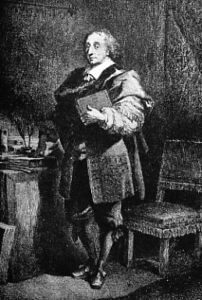When you’re requesting information for a pressure product on our website, you’re offered a choice of units: bar, inches of water column, PSI and a few others. You might recognize the end of two of the options as a name: kilopascal and megapascal.

Who was Pascal?
A native of France whose work covered a range of fields, Blaise Pascal contributed to many mathematic and scientific theories and laws. An inventor, he created one of the first mechanical calculators. Pascal’s calculator could only add and subtract, but in the mid-1600s, that was a feat.
The Pascaline, as the calculator became known, was not his only contribution to mathematics. While still a teenager, he wrote a treatise on projective geometry. His views on probability theory influenced economics and social science.
Pascal’s work in hydraulics set him apart from other scientists at the time. Most believed Aristotle’s hypothesis that a vacuum could not exist: “Everything that is in motion must be moved by something.” Pascal proved him wrong, completing several experiments – one time even enlisting his brother-in-law to climb a small mountain nearby – that showed how air pressure could support liquids.
He is also credited with the hydraulic press and the syringe. These inventions are direct applications of his eponymous law: A change in pressure at any point in an enclosed fluid at rest is transmitted undiminished to all points in the fluid.
In addition to the SI unit and his law, Pascal’s name also is on a programming language, a numbering pattern using a triangle and a philosophical argument about the existence of God (Pascal’s Wager).
What is a pascal?
With that history, it’s clear why Pascal’s name is a logical choice for a unit of pressure. But with so many options to identify pressure measurements, why give this one a new name?
The answer is consistency. In most of the world, the International System of Units – aka SI, aka the metric system – is the official system of weights and measures. The United States, Liberia and Myanmar are the only holdouts. Here in the U.S., pounds per square inch is the common unit for measuring pressure, though at Proportion-Air, we operate in nearly any unit our customers require.
The SI system has seven base units – the meter, ampere, second, mole, Kelvin, candela and kilogram. Those base units can be derived into a number of other units. A pascal is the SI-derived unit of measurement for pressure. The pascal is one newton (an SI-derived unit itself) per square meter. The General Conference on Weights and Measures named the unit after Pascal in 1971 at its 14th conference.

 Proportion-Air Helps Power the Fountains of Bellagio
Proportion-Air Helps Power the Fountains of Bellagio  July Newsletter: Liquid Pressure & Flow Control
July Newsletter: Liquid Pressure & Flow Control  Using Compressed Air Safely
Using Compressed Air Safely